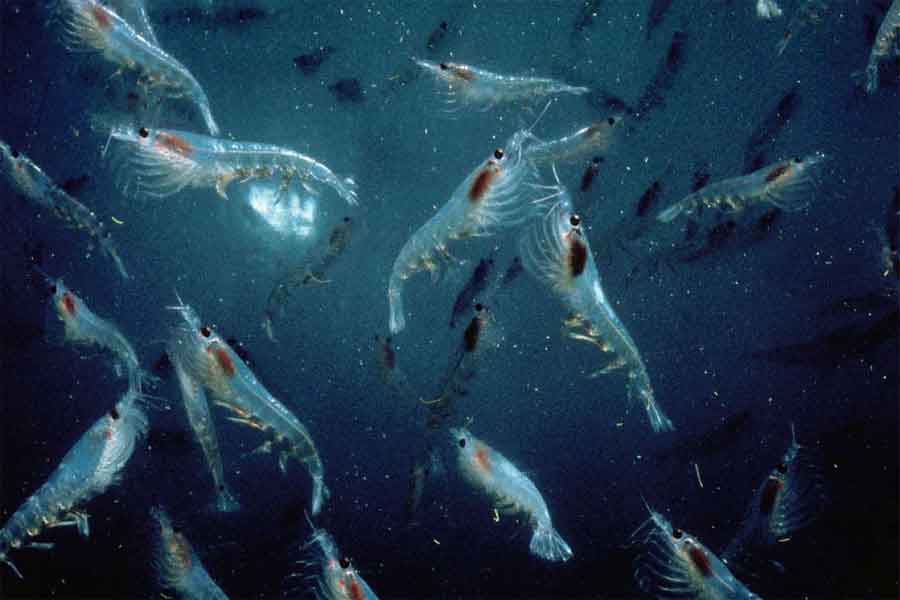
It is difficult to comprehend that the foundation of the diet of large whales is a tiny crustacean, the Antarctic krill, measuring only six centimeters. However, the massive aggregations formed by these small creatures during the mating season are so astounding that they are hard to imagine.
When spring arrives, Antarctic krill forms clusters of several hundred square kilometers near the surface. A Russian research team estimated that a single krill swarm contained 100 million tons of these small animals. If these estimates are accurate, it would mean that a single swarm could have more biomass than the fish caught by humans worldwide in one year.
With the onset of thawing, there is an increase in available light for photosynthesis. Diatoms, small microscopic algae that serve as the krill’s food source, proliferate, and the krill begin to feed again, forming enormous aggregations that facilitate mating and reproduction. A single female krill can produce up to 10,000 tiny eggs. Taking advantage of the aggregation of krill in the surface waters, whales, seals, fish, and even penguins feed on them massively and with minimal effort. Krill is the foundation of Antarctica’s food web, sustaining almost all of its inhabitants.
As winter returns, krill banks disperse under the Antarctic ice but undergo significant changes to survive. Initially, they greatly reduce their metabolism to half or one-third of the summer level and rely on the fat reserves accumulated during the summer. However, as these reserves are depleted, the animal reduces its physical size, resembling a juvenile.
Most crustaceans have to shed their exoskeleton to grow, but krill sheds its exoskeleton every winter to decrease its size to two-thirds of its original size. A smaller body with reduced movement consumes much less energy, as nothing should be wasted to survive in frozen waters until the following spring. They even consume their own discarded exoskeleton during molting. The shrunken and almost immobile krill waits beneath the ice for the arrival of spring to feed and regain its original size.
Shrinking to survive, not spending unnecessarily what is not available, patiently waiting for the passage of winter, surviving under the most extreme conditions. Until spring arrives, until food arrives, until Antarctica bursts back to life, and the waters turn red, marking the return of diatoms, krill, and whales. It revitalizes life and sets the pulse of the ocean.
«You cannot defend what you do not love, and you cannot love what you do not know.»

